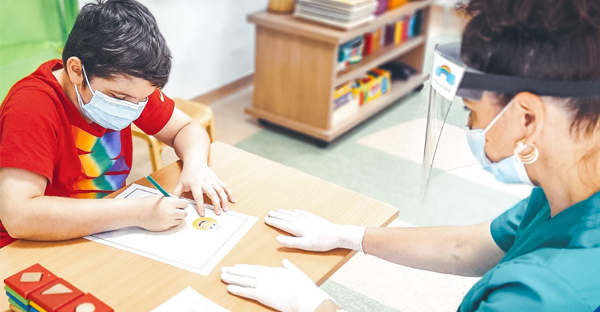Share, care, cure: our vision for mature European Reference Networks
December 2020
A mature European Reference Network (ERN) system will leave no person living with a rare disease in uncertainty regarding their diagnosis, care and treatment.
ERNs are one of the most significant achievements that the rare disease community as a whole has ever accomplished. For over 15 years, we have worked alongside dedicated patient organisations, clinicians and policy makers across Europe to see the idea evolve into 24 Networks connecting rare disease centres of expertise from across 27 EU Member States and Norway.
Now, at this politically important moment of greater EU cooperation in health, we need to carefully plan the next steps to reach the ERNs’ true potential and integrate this new structure into our national health systems.
We, at EURORDIS-Rare Diseases Europe, alongside our Member Organisations and ePAG patient advocates, publish our vision and recommendations for a mature European Reference Networks’ system.
This paper sets the direction of travel for the Networks at national and European level, to deliver on their promise to share, care and cure by 2030 so that they can really benefit the 30 million people living with a rare disease in Europe.
What value do ERNs bring for people with rare diseases?
Real progress on rare disease care and research is heavily dependent on our ability to pool expertise and data from various sources across borders.
Health data, coupled with active patient organisations and connected clinical and research networks, is the recipe to transform care delivery and drive research and innovation. Today the ERNs bring together these four elements, representing a unique opportunity to improve health outcomes and the lives of people living with a complex or rare condition in Europe.
This offers a new way to deliver networked highly specialised care. But beyond giving patients the possibility of having their case referred to ERN clinicians, ERNs should be integrated in and enhance the capacities of national health systems so that patients can get a timely diagnosis and treatment in their own country. Nationally-anchored ERNs will contribute to reducing existing inequalities in access to high quality care.
What next for ERNs?
These “Recommendations to achieve a mature ERN system by 2030” have been developed by EURORDIS, our member organisations and ERN ePAG patient advocates. EURORDIS has played a critical role in amplifying the patient voice and creating the conditions for engagement within ERNs so that their activities remain driven by patients’ needs.
The paper, and the accompanying Policy Brief, reviews progress achieved so far and presents our vision of a mature ERN system. It calls for patient organisations and experts to unify within the Networks, and for ERNs to be embedded within healthcare systems across the European Union.
But there are many steps to be taken and many stakeholders that need to be mobilised to make this a reality.
Anita Kienesberger, ePAG advocate with ERN PaedCan, commented:
“These recommendations and vision mark the great progress that has been made, at pace, in efforts to pool scarce expertise in rare and complex diseases so that patients across Europe are not subjected to a quality of care defined by where they live.
It also brings hope to patients, whose needs sit central to this vision. If realised, the impact for patients across Europe cannot be underestimated. We are proud to have taken part in developing this vision and urge all stakeholders to come together, for people living with a rare disease, as we take these next leaps forward!”
Our vision for a mature ERN system in 2030
Our vision is articulated around four domains:
- areas of collaborative work (care, knowledge sharing, research and training);
- the common services to support the 24 Networks;
- the funding, governance, scope and structure arrangements;
- and the national dimension of ERNs.
Indeed, Member States’ role in taking ERNs to the next stage is pivotal. National and regional health authorities must take political ownership and leadership, define accreditation and support systems for Centres of Expertise, while defining the processes to adopt and use the knowledge assets curated and created by the Networks.
Substantial investment from different sources is also needed to match the ambition of the Networks. There is a window of opportunity as healthcare systems are increasingly inclined to embrace new ways of working, and as the COVID-19 pandemic has put the spotlight on health cooperation across Europe. This comes at a crunch point, as the EU shapes its ambition for a European Health Union over the coming years.
Our children, families and community deserve equitable access to high quality care treatment and diagnosis. To achieve this vision all stakeholders and partners in the ERNs community must keep up with the original ambition of the Networks and continue working together to achieve this vision. This will be an essential part of taking forward the recommendations Rare 2030 Foresight Study for Rare Disease Policy.
We encourage you to read and share this paper to drive change, improve healthcare services for our communities and accelerate clinical research.
Jenny Steele, Communications Manager, EURORDIS
Traducteur : Trado Verso
Übersetzer: Peggy Strachan
Traductor: Conchi Casas Jorde
Traduttrice: Roberta Ruotolo
Tradutores: Ana Cláudia Jorge e Victor Ferreira
Перевод: Talkbridge
